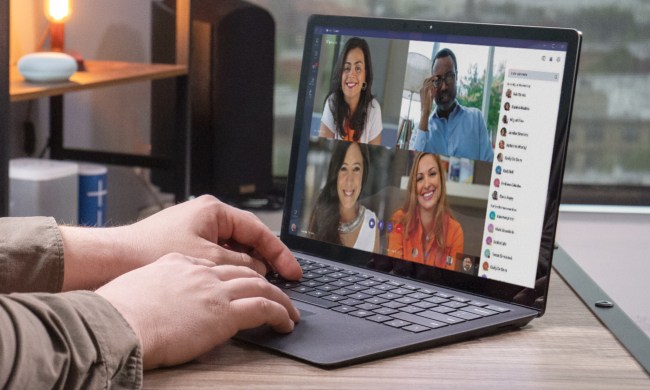If you have a small business and are trying to stay in contact with your clients, stakeholders, and employees, having virtual meetings via videoconferencing software can help you stay connected. Over the last year, videoconferencing software has surged in popularity, and that focus has helped make it better than ever at connecting people over long distances.
Finding the perfect videoconferencing software can be a little tedious with so many options out there, so we have rounded up a few top names in the videoconferencing game beneficial to small businesses.
Zoom Meetings

Zoom offers a wide range of plans for businesses that are looking to collaborate over videoconferences. With Zoom, users can pay monthly or annually; the prices range from free to $200 per year. The free tier allows users to host meetings with up to 100 participants; however, group meetings are only 40 minutes, while 1:1 meetings have unlimited time.
For small teams, Zoom offers a pro tier, which unlocks the time frame for group meetings to 30 hours, but it is still limited to 100 participants. Users can also stream their meetings to social media and access 1GB of cloud recording per license, with up to nine licenses per account.
Zoom also offers a tier specifically for small and medium-sized businesses, priced at $20 per month per license or $200 a year per license. This tier is in line with what small businesses can benefit from. This tier allows for hosting up to 300 participants, cloud recording transcripts, managed domains, and company branding.
Many small businesses can probably get by with Zoom’s free tier if they are known for doing 1:1 meetings. Another great feature Zoom offers for all tiers is sharing your screen with other viewers during a meeting. This allows the host and users to share information about the meeting and makes videoconferencing very effective.
Microsoft Teams

Microsoft Teams is a great platform for businesses that are invested in Microsoft’s software products. Microsoft offers a free version of Teams that offers videoconferencing for up to 300 people, plus screen sharing and customized backgrounds. Another benefit of using the free version of Teams is using the web versions of Microsoft Word, Excel, and Powerpoint.
Small businesses looking to record their meetings can upgrade to Microsoft 365 Business Basic for $5 per user per month. Microsoft 365 users have access to the meetings and calling features in Microsoft Teams, but with additional features available for Microsoft 365 subscribers.
If your business needs a simple videoconference program that allows for teamwork and good collaboration flow, then Microsoft Teams can offer that. If your business is already subscribed to Microsoft 365, then using Teams is almost a no-brainer.
Skype

Skype is another Microsoft videoconferencing client that has been on the scene for quite some time. Skype supports up to 50 participants for an unlimited time for free. Skype features a call-recording feature that any participant can trigger. When this is activated, it will notify all call participants that the call is being recorded, and the recordings are available for users to save and share for up to 30 days.
Cisco Webex

Cisco has been very business-oriented for years, and with Webex, it helps business with an easy to use videoconferencing platform. Just like many platforms, Cisco offers free and paid plans for users.
Webex’s free version offers many features, such as meetings of up to 100 users for up to 50 minutes, screen sharing, interactive tools, saving recordings to your computer, etc. For small businesses that have shorter meetings, Webex could be beneficial.
Furthermore, for businesses looking to record their meetings and extend meeting times, Cisco offers a Starter plan at $14 per month. With the Starter plan, users can access 5GB of cloud recording storage, and it unlocks the meeting length to 24 hours.
Cisco Webex can be a profound and intuitive platform, especially for administrators who want more control over what is happing during meetings.
Lifesize Video Conferencing

Lifesize Video Conferencing is one of the first 4K videoconferencing apps. This solution allows users to connect up to eight people and collaborate. Furthermore, in the free version, meetings are unlimited, which can be very beneficial for small businesses that are not looking to have many people in meetings.
The Lifesize Plus plan is geared toward small businesses, including all the standard features, and allows 300 participants during video calls and an hour of cloud-recording storage.
With so many options, finding the best videoconferencing software is possible for any small or medium-sized business. Some software has extra features that can benefit you outside of just videoconferencing.



